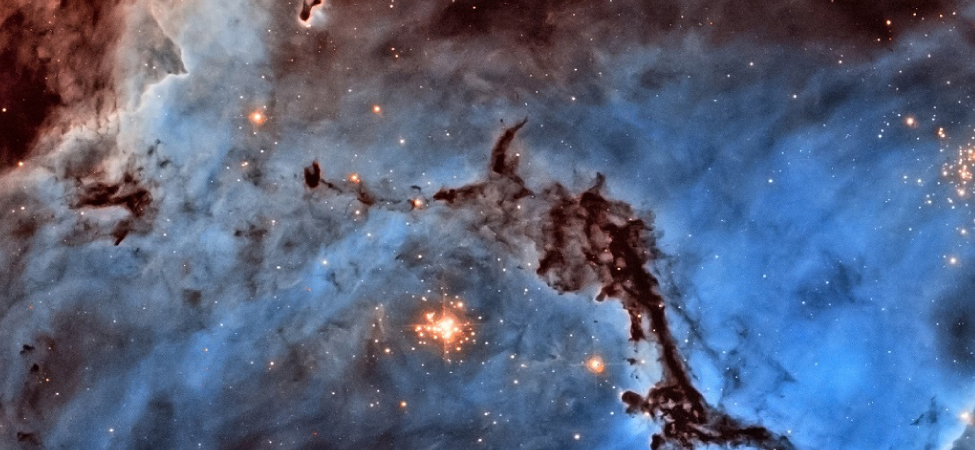8.1: Prelude to Atomic Structure
- Page ID
- 11565
In this chapter, we use quantum mechanics to study the structure and properties of atoms. This study introduces ideas and concepts that are necessary to understand more complex systems, such as molecules, crystals, and metals. As we deepen our understanding of atoms, we build on things we already know, such as Rutherford’s nuclear model of the atom, Bohr’s model of the hydrogen atom, and de Broglie’s wave hypothesis.

Figure \(\PageIndex{1}\) is NGC1763, an emission nebula in the small galaxy known as the Large Magellanic Cloud, which is a satellite of the Milky Way Galaxy. Ultraviolet light from hot stars ionizes the hydrogen atoms in the nebula. As protons and electrons recombine, radiation of different frequencies is emitted. The details of this process can be correctly predicted by quantum mechanics and are examined in this chapter.


